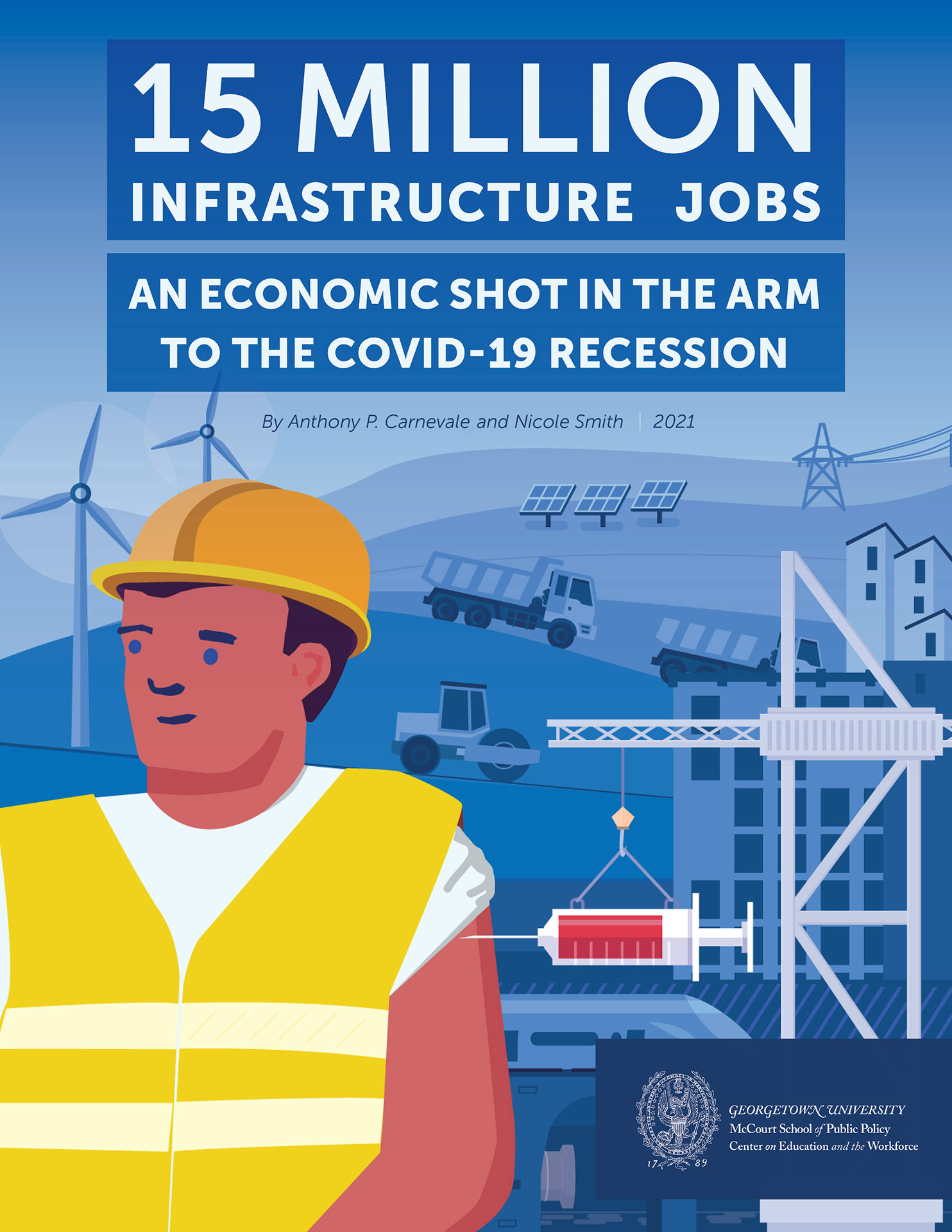15 Million Infrastructure Jobs
An Economic Shot in the Arm to the COVID-19 Recession
Summary
A $2 trillion jobs plan (of which $1.5 trillion will go to infrastructure) from the Biden-Harris administration would be good medicine to nurse the economic wounds inflicted by the COVID-19 pandemic. The infrastructure plan would create or save 15 million jobs over 10 years and would increase the share of infrastructure jobs from 11% to 14% of all jobs in this country, temporarily reviving the blue-collar economy.
Key Findings
90% of infrastructure jobs are held by men, and the majority of new jobs created would be in male-dominated fields.
An infrastructure program would create 3.4 million jobs in the Southeast, 3.2 million jobs in the Pacific Coastal region, 2.8 million jobs in the Midwest, 2.4 million jobs in the Mid-Atlantic, 1.9 million jobs in the Southwest, and 713,000 jobs in New England.
An infrastructure program would create 8 million jobs for workers with a high school diploma or less, 4.8 million jobs for workers with more than a high school diploma but less than a bachelor’s degree, and 2.25 million jobs for workers with bachelor’s degrees and above.
An infrastructure stimulus would expand broadband internet access to 21.3 million more Americans.
Infrastructure Plan Could Restore the Pace of Job Creation That Was Derailed by COVID-19
Source: Georgetown University Center on Education and the Workforce forecast using data from US Bureau of Labor Statistics and IHS Markit.
Infrastructure Jobs Will Require Varying Levels of Training
The jobs that would require the highest level of educational attainment would require the most training. Of the jobs created through the infrastructure program, 60% would require six months of training or less, and 40% would require more than six months of training.
Source: Georgetown University Center on Education and the Workforce analysis of data from the Occupational Information Network (O*NET) 25.0 Database, 2020, and US Census Bureau, American Community Survey (ACS) microdata, 2019.
Note: Values may not sum to 100 percent due to rounding.
Infrastructure Program Would Create Jobs at Every Education Level
The bulk of new infrastructure jobs (75%) would be for workers with no more than a high school diploma and some non-degreed short-term postsecondary training.
Source: Georgetown University Center on Education and the Workforce analysis of data from US Census Bureau, American Community Survey (ACS), 2019.
Note: Values may not sum to 100 percent due to rounding.
A Majority of Infrastructure Jobs Will Be in Transportation and Material Moving Occupations
Infrastructure jobs will consist of those for tradesmen, construction workers, and material moving and transportation workers, as well as downstream jobs only somewhat related to infrastructure, such as in offices and retail services.
Source: Georgetown University Center on Education and the Workforce forecast using data from US Census Bureau and Bureau of Labor Statistics, Current Population Survey (CPS); US Census Bureau, American Community Survey (ACS); US Bureau of Labor Statistics; and IHS Markit.
Note: Values may not sum to total due to rounding.
Resources
15 Million Infrastructure Jobs: An Economic Shot in the Arm to the COVID-19 Recession finds that an infrastructure stimulus would increase the share of infrastructure jobs from 11% to 14% of all jobs in this country, temporarily reviving the blue-collar economy.

